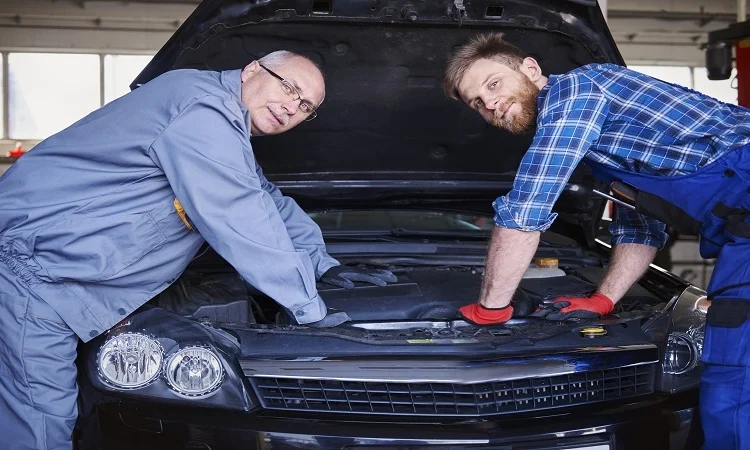Keeping your car in top-notch condition doesn’t have to be a daunting task, even if you aren’t a mechanic. This guide is designed to empower car owners with expert tips and tricks to maintain their vehicles effectively. Whether you’re a seasoned driver or a new car owner, the insights provided will help you extend the lifespan of your vehicle, save money on repairs, and ensure a smooth driving experience.
Why Regular Car Maintenance Matters
Regular car maintenance is essential for several reasons. Firstly, it ensures that your car runs efficiently, reducing the risk of breakdowns and costly repairs. Secondly, a well-maintained car is safer to drive, protecting you and your passengers. Lastly, keeping your car in good condition helps maintain its resale value, which can be beneficial when you decide to sell or trade it in.
Understanding the Basics
Before diving into the more complex aspects of car maintenance, it’s crucial to understand some basic components. Familiarizing yourself with key parts like the engine, transmission, brakes, and tires will give you a solid foundation for performing routine checks and identifying potential issues early on.
Checking and Changing Engine Oil
The engine oil is the lifeblood of your car, lubricating moving parts and reducing friction. Regularly checking and changing your engine oil is one of the simplest yet most important maintenance tasks. Consult your car’s manual for the recommended oil type and change interval. Typically, oil should be changed every 3,000 to 5,000 miles.
- How to Check Your Oil Level: Checking your oil level is easy and should be done monthly. Locate the dipstick, pull it out, wipe it clean, reinsert it, and pull it out again to check the oil level. The oil should be between the “min” and “max” marks.
- Signs You Need an Oil Change: Dirty or dark oil, a burning smell, and engine noise are indicators that it’s time for an oil change. Failing to change your oil regularly can lead to engine damage and decreased performance.
- Choosing the Right Oil: Always use the oil recommended by your manufacturer. Using the wrong oil type can affect engine performance and fuel efficiency.
Inspecting and Replacing Air Filters
Air filters prevent dirt and debris from entering the engine, ensuring optimal performance and fuel efficiency. A clogged air filter can lead to reduced engine power and increased emissions.
- How to Check Your Air Filter: Locate the air filter housing under the hood, open it, and inspect the filter. If it appears dirty or clogged, it’s time for a replacement.
- When to Replace Air Filters: Air filters should be replaced every 12,000 to 15,000 miles or as specified in your car’s manual. In dusty environments, more frequent replacements may be necessary.
- Benefits of a Clean Air Filter: A clean air filter improves engine performance, optimizes fuel efficiency, and reduces harmful emissions.
Maintaining Your Tires
Tires are the only part of your car that makes contact with the road, making their maintenance critical for safety and performance.
- Checking Tire Pressure: Proper tire pressure ensures a smooth ride and maximizes fuel efficiency. Use a tire pressure gauge to check the pressure regularly, especially before long trips. Refer to your car’s manual or the sticker inside the driver’s door for the recommended pressure levels.
- Inspecting Tire Tread: Worn-out tires can compromise your car’s grip on the road, especially in wet conditions. Use the penny test to check tire tread depth—insert a penny into the tread with Lincoln’s head facing down. If you can see the top of Lincoln’s head, it’s time to replace your tires.
- Rotating and Balancing Tires: Rotating your tires every 6,000 to 8,000 miles ensures even wear and extends lifespan. Balancing your tires during rotation can prevent uneven wear and improve ride comfort.
Keeping Your Brakes in Check
Brakes are crucial for your safety, so regular inspection and maintenance are non-negotiable.
- Signs of Brake Wear: Squeaking, grinding noises, and a spongy brake pedal are signs that your brakes need attention. Don’t ignore these warnings—brake issues can escalate quickly and become dangerous.
- Checking Brake Fluid: Brake fluid is essential for the hydraulic system. Low or dirty brake fluid can affect braking performance. Check the fluid level monthly and top it up if necessary. Always use the brake fluid specified in your car’s manual.
- Replacing Brake Pads and Rotors: Brake pads and rotors wear out over time and should be replaced periodically. If you notice reduced braking performance or hear unusual noises, have your brakes inspected by a professional.
Ensuring Battery Health
A healthy battery is vital for starting your car and powering electrical systems.
- Checking Battery Terminals: Inspect the battery terminals for corrosion, which can affect performance. Clean the terminals with a mixture of baking soda and water if necessary.
- Testing Battery Voltage: Use a multimeter to check the battery voltage. A fully charged battery should read around 12.6 volts. If it’s significantly lower, it may be time for a replacement.
- Replacing an Old Battery: Car batteries typically last 3 to 5 years. If your battery is nearing the end of its lifespan, consider replacing it to avoid unexpected breakdowns.
Monitoring Fluid Levels
Apart from engine oil and brake fluid, your car relies on several other fluids to function correctly.
- Transmission Fluid: Transmission fluid lubricates the gears and ensures smooth shifting. Check the fluid level regularly and top it up if needed. If you’re unsure how to do this, a local transmission shop in Salt Lake City can help.
- Coolant: Coolant prevents your engine from overheating. Check the coolant level in the reservoir and add more if necessary. Make sure the engine is cool before opening the coolant cap.
- Power Steering Fluid: Power steering fluid ensures smooth and easy steering. Check the fluid level regularly and top it up if needed. Low power steering fluid can make steering difficult and affect safety.
Keeping Your Car Clean
A clean car not only looks good but also lasts longer. Regular washing and waxing protect the paintwork from damage caused by dirt, debris, and UV rays.
- Washing Your Car: Wash your car regularly to remove dirt, salt, and other contaminants. Use a car-specific shampoo and a soft sponge to avoid scratching the paint.
- Waxing for Protection: Waxing your car every few months adds a protective layer to the paint, keeping it shiny and preventing oxidation.
- Cleaning the Interior: Don’t forget the interior! Vacuum regularly, wipe down surfaces, and clean the windows for a pleasant driving environment.
Scheduling Regular Professional Inspections
While DIY maintenance is important, professional inspections are equally crucial. Mechanics have the expertise and tools to identify issues that may not be visible to the untrained eye.
- Annual Inspections: Schedule an annual inspection with a trusted mechanic to ensure all components are in good working order. This can prevent minor issues from becoming major problems.
- Transmission Check-Up: If you experience issues with your transmission, consult a transmission shop in Salt Lake City for a thorough check-up and necessary repairs.
- Specialized Services: Some services, like alignment and suspension checks, require specialized equipment. Ensure these are part of your regular maintenance routine.
Learning Basic DIY Repairs
Learning to perform basic repairs can save you time and money. While some tasks are best left to professionals, others can be handled with a bit of knowledge and the right tools.
- Changing a Flat Tire: Knowing how to change a flat tire is essential. Keep a spare tire, jack, and lug wrench in your car, and practice changing a tire at home.
- Replacing Wiper Blades: Wiper blades wear out over time and need replacement for clear visibility. Follow your car’s manual for instructions on how to replace them.
- Fixing Minor Leaks: Small leaks, like those from a loose hose clamp, can be fixed easily. Identify the source of the leak and tighten or replace the necessary components.
Staying on Top of Recalls and Software Updates
Car manufacturers occasionally issue recalls and software updates to address safety concerns and improve performance.
- Checking for Recalls: Stay informed about any recalls related to your car model. Manufacturers typically offer free repairs for recalled parts.
- Updating Software: Modern cars often come with software that controls various functions. Regular updates can improve performance and fix bugs.
- Registering Your Vehicle: Register your vehicle with the manufacturer to receive notifications about recalls and updates.
Building a Relationship with a Trusted Mechanic
Having a trusted mechanic can make car maintenance much easier. They can provide expert advice, perform necessary repairs, and keep your car running smoothly.
- Finding a Reliable Mechanic: Look for mechanics with good reviews and certifications. Personal recommendations from friends and family can also be helpful.
- Building Trust: Communicate openly with your mechanic and ask questions about recommended repairs. Building a relationship based on trust ensures you get the best service.
- Regular Visits: Schedule regular visits for routine maintenance and inspections. This helps catch potential issues early and keeps your car in optimal condition.
Conclusion
Maintaining your car like a mechanic isn’t as challenging as it may seem. By following these expert tips and tricks, you can keep your vehicle in excellent condition, ensuring a safe and enjoyable driving experience. Remember, regular maintenance not only extends your car’s lifespan but also saves you money in the long run.
Ready to take your car maintenance skills to the next level? Start implementing these tips today and see the difference for yourself.

